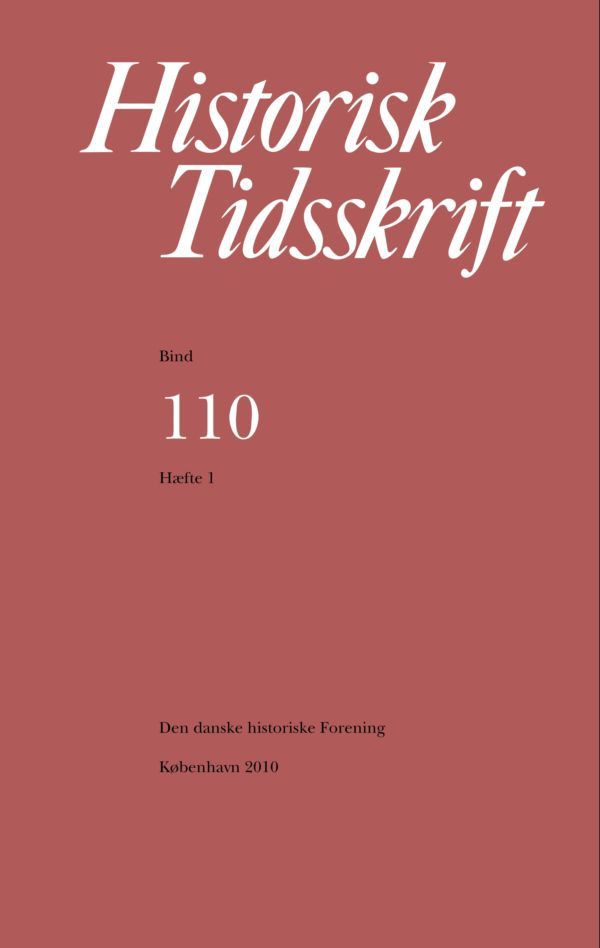Kieler Umschlag. En analyse af pengemarkedet i Kiel i det 16. og 17.århundrede
Resumé
The Kieler Umschlag. An Analysis of the Credit Market in Kiel in the 16th and 17th CenturyThe Kieler Umschlag was the principal regional and even international credit market for Northern Germany, the Duchies of Schleswig and Holstein and the Kingdom of Denmark in the 16th and 17th centuries. Here, Danish kings and to some extent Danish nobility procured the major part of their loans and sought an outlet for capital investments. These facts are well known; however, the function and structure of the market largely remains obscure. The present article is an attempt to redress the balance. The oldest document mentioning the Kieler Umschlag is a letter from the council of the city of Lübeck from 1469. The market took place every year in the week following Epiphany. Predominant creditors were the Holstein landed aristocracy, who sampled large fortunes by commercial farming and industrial activities, and as military entrepreneurs on the battlefields of Europe. Their financial strength allowed them to play an important part as creditors even on the international money market in Antwerpen. In contrast to views previously held, the present study documents the participation of merchant bankers in Kiel, primarily the house of Loitz of Stettin (present-day Szczecin). The extent of their contribution is impossible to assess, but the fact that they did participate supports the notion that modern financial instruments for credit and money transfer – known from Antwerpen and Bruges, the larger financial markets in Northern Europe – were indeed also known, and probably used, in Kiel. Bonds, the instruments of debt, were in several instances subject to the proviso that the document was transferable to a third party who had the same rights in relation to the debtor as the original creditor. A number of Kieler bonds with the Danish king as creditor or debtor under these terms demonstrate that cashfree payments and money transfer may have been an established practise in Kiel. There is no evidence, however, that more advanced credit instruments, like the bill of exchange, were in use in Kiel in the 16th and 17th centuries. The security provided in the bonds was variable in form. Sometimes the debtor’s seal was sufficient, but often it included a mortgage in his property. In these cases, the risk and, by implication, the interest rate was usually somewhat lower. Guarantors who shared a joint liability appeared frequently in the loan contracts. A common feature, specific for the Kieler bonds, was that the security often included a promise from the debtor voluntarily to go into a rather peculiar form of debtor’s prison called Einlager in case of default. Failing fulfilment of the obligation to submit to Einlager resulted in infamy for the debtor. The Einlager institution was abolished in the German Empire in 1577, but although Holstein belonged to the Empire, the Einlager institution was maintained there, primarily out of consideration for the trustworthiness of the Kieler Umschlag. In fact, the Einlager institution as a legal sanction in Holstein may have been the one most important factor inducing the respect enjoyed by the Kieler bonds. The interest rate in Kiel varied around 6% in the period under study. At the end of the 16th century and in the beginning of the 17th, an interest rate of 7% was quite common, and even higher rates were not unusual according to narrative sources. However, allegations of 10-12% are not sustained by sources regarding princely accounts.Downloads
Publiceret
Citation/Eksport
Nummer
Sektion
Licens
Ophavsret til bidrag i Historisk Tidsskrift tilhører forfatterne og Den danske historiske Forening som udgiver af Historisk Tidsskrift. For illustrationer gælder den ophavsret, som står anført i billedteksten. Ophavsretslovens almindelige bestemmelser gælder, hvilket vil sige, at ophavsretten gælder i 70 år efter forfatterens død. Bidrag i Historisk Tidsskrift må derfor, med forbehold for en ”moving wall” på tre år, frit downloades, læses, gemmes, anvendes og citeres (med kildeangivelse) i privat og videnskabelig sammenhæng, men de må ikke helt eller delvis genudgives af tredjepart, heller ikke i redigeret form, uden tilladelse fra forfatterne og Den danske historiske Forening. Henvendelse skal i så fald rettes til Historisk Tidsskrifts redaktion på histtid@hum.ku.dk.





